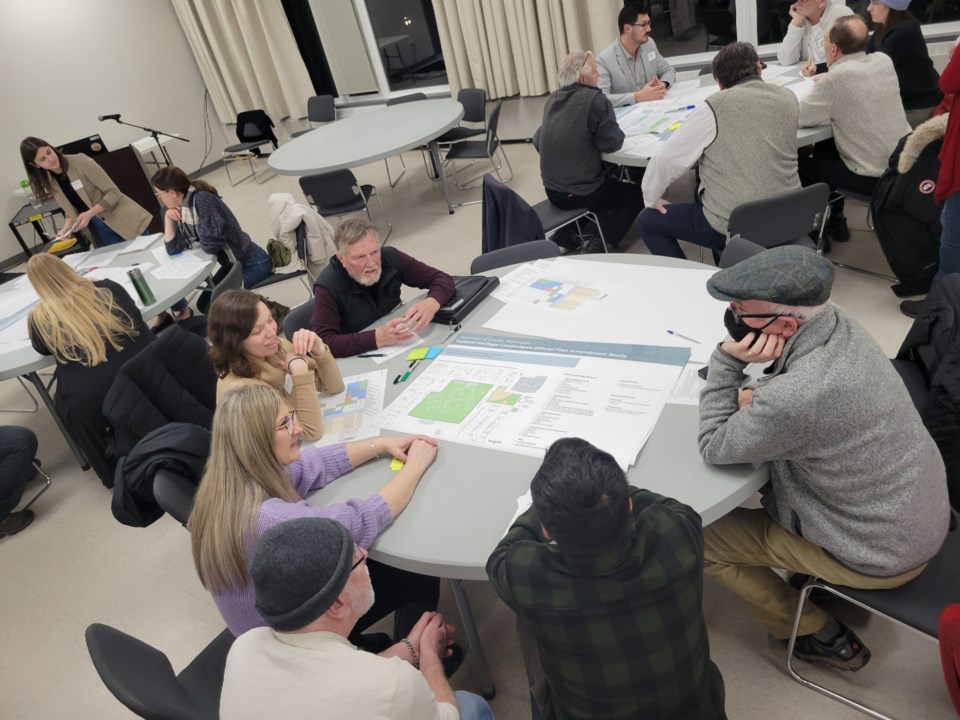CENTRE WELLINGTON – A long process that will give Centre Wellington council the ability to implement tools to protect the township’s areas with heritage or cultural value is nearly ready, but it won’t be a one-size-fits-all process.
As approved by the previous council in March 2022, an Official Plan Amendment (OPA) to officially recognize 18 cultural heritage landscapes (CHL) in Centre Wellington will be coming to council this spring, attendees of a workshop session were told Wednesday evening.
Roughly 30 people attended the meeting.
A CHL is a geographical area that may have been modified by human activity and is identified as having cultural heritage value or interest by a community, including an Indigenous community.
It could have various features such as structures, spaces, archaeological sites or natural elements that are associated together, for example a heritage conservation district, village, park, neighbourhood or natural area.
Council previously endorsed a study in June 2021 which identified the following CHLs in Centre Wellington:
- Beatty Brothers factory and residential area
- Churchill Crescent neighbourhood (wartime housing)
- Elora historical village core
- Fergus historical village core
- Ferrier Estate and Union Street East
- Salem
- Victoria Park and Victoria Crescent neighbourhood
- Allan Farmstead
- Belsyde Cemetery
- Belwood historical village core
- Elora Cataract Trailway
- Elora Gorge
- Elora municipal cemetery and St. Mary’s Roman Catholic cemetery
- Elora Quarry
- Grand River corridor
- Oustic
- Trestle Bridge Trail
- Victoria Park in Fergus
But first, the township and consultants held a workshop Wednesday night to get more community input into how these CHLs will be protected.
The OPA is not automatic protection, Rebecca Sciarra from consultant ASI explained to about 30 attendees, but gives council the ability to implement policy to support their long term management.
“Some of these are hard tools, resulting in the creation of processes or requirement for property owners and the township, things like management plans or streamlined permitting systems or additional heritage permit requirements for properties,” Sciarra said.
“Other tools are softer, establishing supporting strategies such as financial grants or means for municipalities to secure conservation commitments from applicants and property owners for example.”
Not every tool goes with every CHL. Sciarra noted some already have protections from the Grand River Conservation Authority, some are simple and consist of few buildings, and some have hundreds of properties and complex policy priorities already set for them.
“A one size fits all approach will not work across a wide range of CHLs such as those in Centre Wellington,” Sciarra said.
Regardless, a key takeaway learned from other municipalities Sciarra highlighted was it will take a “multi-pronged toolbox” at each CHL, meaning multiple policies in place for each.
“The township official plan currently does not have sufficient policies to enable the range of tools they may want to use for managing change in their CHLs,” Sciarra said.
After a breakout session where attendees worked in groups to suggest tools should be used for each CHL. As was said earlier, various tools were suggested for different CHLs but common themes included heritage corridors and there was some curiosity over the community permit planning system (CPPS).
A CPPS creates a streamlined process for development in designated areas by creating a specific plan that sets out specific standards such as height and density. Once a CPPS bylaw is in effect, it combines zoning, site plan and minor variance processes into a single application and approval process.
Sciarra said while not often talked about in terms of historical areas but could develop objectives which include conservation and protection of historical areas.
Consultants and township staff would take the public input and the next step is to write a draft OPA with an additional public meeting.
Afterwards, it will go forward for council’s consideration of final approval in the spring.
More information on the OPA and CHLs can be found here.



